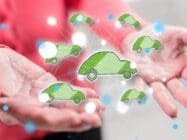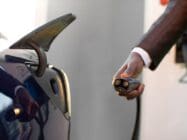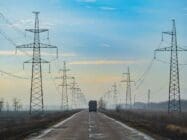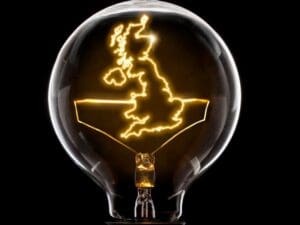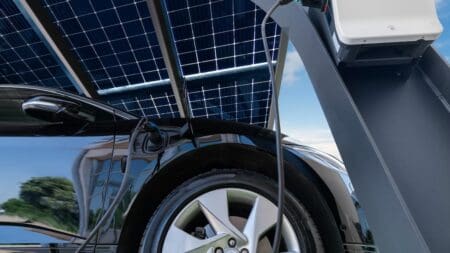
Global EV demand, and accompanying sales, is set to surge to another record this year, according to the International Energy Agency’s (IEA’s) latest Global Electric Vehicle Outlook, released today. The latest annual report forecasts a 35% jump in sales this year after 2022 saw more than 10 million sold, which is a new record.
According to the IEA, this explosive growth means electric cars’ share of the overall car market has risen from around 4% in 2020 to 14% in 2022 and is set to increase further to 18% this year.
In a press statement on the report’s release, IEA executive director Fatih Birol commented: “Electric Vehicles (EVs) are one of the driving forces in the new global energy economy that is rapidly emerging – and they are bringing about a historic transformation of the car manufacturing industry worldwide.
“The trends we are witnessing have significant implications for global oil demand. The internal combustion engine has gone unrivalled for over a century, but electric vehicles are changing the status quo. By 2030, they will avoid the need for at least 5 million barrels a day of oil. Cars are just the first wave: electric buses and trucks will follow soon.”

Market concentrations
According to the report, the overwhelming majority of electric car sales to date are mainly concentrated in three markets – China, Europe and the United States.
China is the frontrunner, with 60% of global electric car sales taking place there in 2022. Today, more than half of all electric cars on the road worldwide are in China. Europe and the United States, the second and third largest markets, both saw strong growth with sales increasing 15% and 55% respectively in 2022.
Ambitious policy programmes in major economies, such as the Fit for 55 package in the European Union and the Inflation Reduction Act in the United States, are forecast by the IEA to further increase market share for electric vehicles this decade and beyond. By 2030, the average share of electric cars in total sales across China, the EU and the United States is set to rise to around 60%.
During a press debriefing on today, Birol added how: “In the years to come, even with existing policies of today in the three top car markets – China, US and in Europe – 60% of all the cars sold will be electric. Developments outside these top markets are slower, but I know that India, Indonesia, Thailand and other countries are moving.”
These encouraging trends are also having positive knock-on effects on battery production and supply chains, the report finds.
It highlights that announced battery manufacturing projects would be more than enough to meet EV demand by 2030 in the IEA’s Net Zero Emissions by 2050 report. However, manufacturing remains highly concentrated, with China dominating the battery and component trade – and increasing its share of global electric car exports to more than 35% last year.’

Domestic industry
Several economies have announced policies to foster domestic industries that will improve their competitiveness in the EV market in years to come.
The EU’s Net Zero Industry Act aims for nearly 90% of annual battery demand to be met by domestic battery manufacturers. Similarly, the US Inflation Reduction Act places emphasis on strengthening domestic supply chains for EVs, batteries and minerals.
According to the report, between August 2022, when the Inflation Reduction Act was passed, and March 2023, major EV and battery makers announced investments totalling at least $52 billion in EV supply chains in North America.
Despite a concentration of electric car sales and manufacturing in only a few big markets, there are promising signs in other regions. Electric car sales more than tripled in India and Indonesia last year, albeit from a low base and they more than doubled in Thailand.
The share of electric cars in total sales rose to 3% in Thailand and to 1.5% in India and Indonesia; a combination of effective policies and private sector investment is likely to increase these shares in the future, states the IEA. In India on the other hand, the government’s $3.2 billion incentive programme, which has attracted investments worth $8.3 billion, is expected to increase battery manufacturing and EV rollout substantially in the coming years.
In emerging and developing economies, the report states that the most dynamic area of electric mobility is two- or three-wheel vehicles, which outnumber cars. For example, over half of India’s three-wheeler registrations in 2022 were electric, demonstrating their growing popularity. In many developing economies, two- or three-wheelers offer an affordable way to get access to mobility, meaning their electrification is important to support sustainable development.
EV supply chains and battery production
According to their analysis, the increase in EV demand is concurrently driving demand for batteries and related critical minerals.
Automotive Lithium-Ion (Li-Ion) battery demand was found to have increased by about 65% to 550GWh in 2022, from about 330GWh in 2021, primarily a result of growth in electric passenger car sales. In 2022, about 60% of lithium, 30% of cobalt and 10% of nickel demand was for EV batteries.
Only five years prior, these shares were around 15%, 10% and 2%, respectively. Reducing the need for critical materials will be important for supply chain sustainability, resilience and security, especially given recent price developments for battery material.
New alternatives to conventional lithium-ion are also on the rise, they state. The share of Lithium-Iron-Phosphate (LFP) chemistries reached its highest point ever, driven primarily by China: around 95% of the LFP batteries for electric LDVs (Light Duty Vehicles) went into vehicles produced in China.
Additionally, supply chains for (lithium-free) sodium-ion batteries are also being established, with over 100GWh of manufacturing capacity either currently operating or announced, almost all in China.
Although the EV supply chain is expanding, states the report, manufacturing remains highly concentrated in certain regions, with China being the main player in battery and EV component trade.
In 2022, 35% of exported electric cars came from China, compared with 25% in 2021. Europe is China’s largest trade partner for both electric cars and their batteries. In 2022, the share of electric cars manufactured in China and sold in the European market increased to 16%, up from about 11% in 2021.


